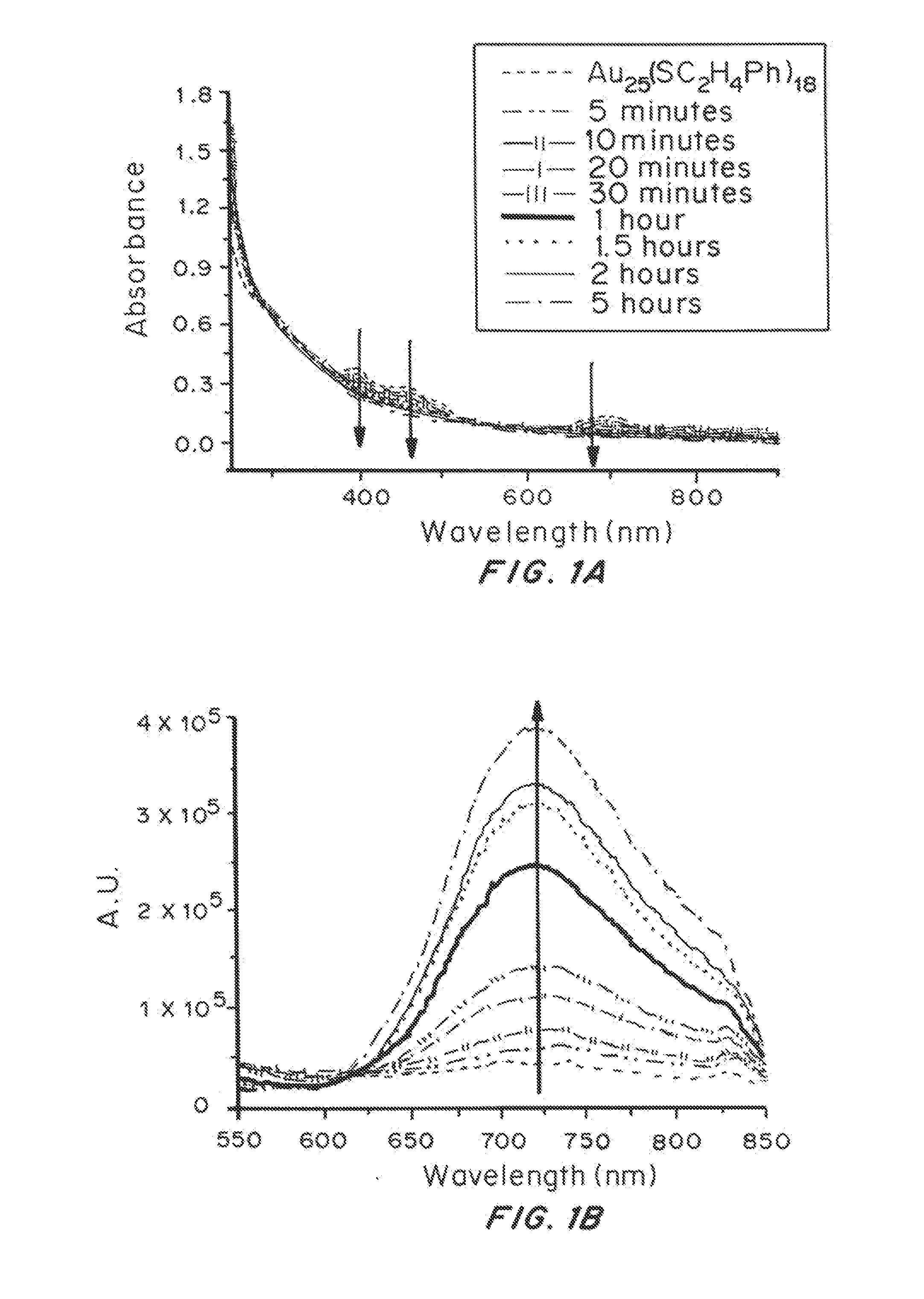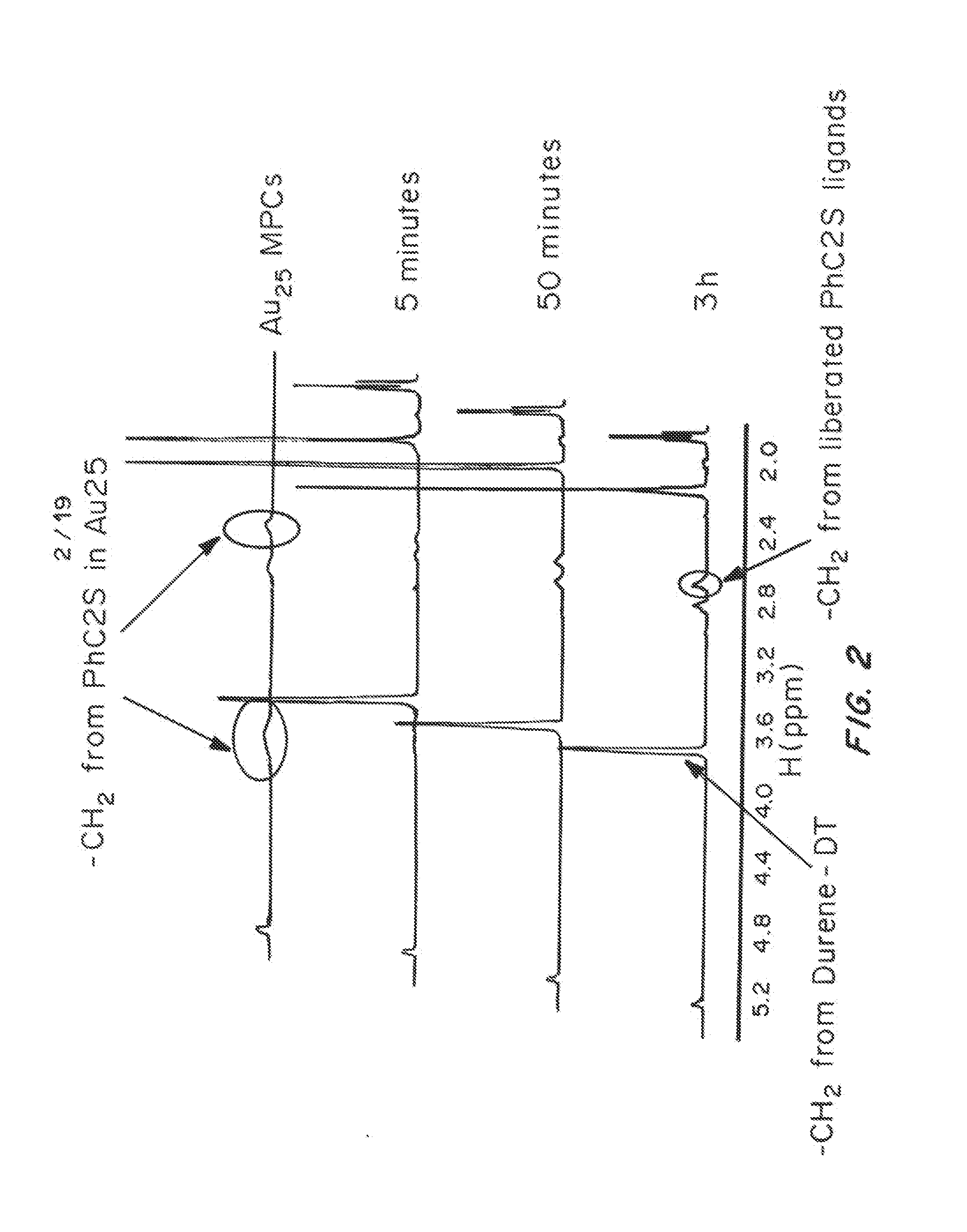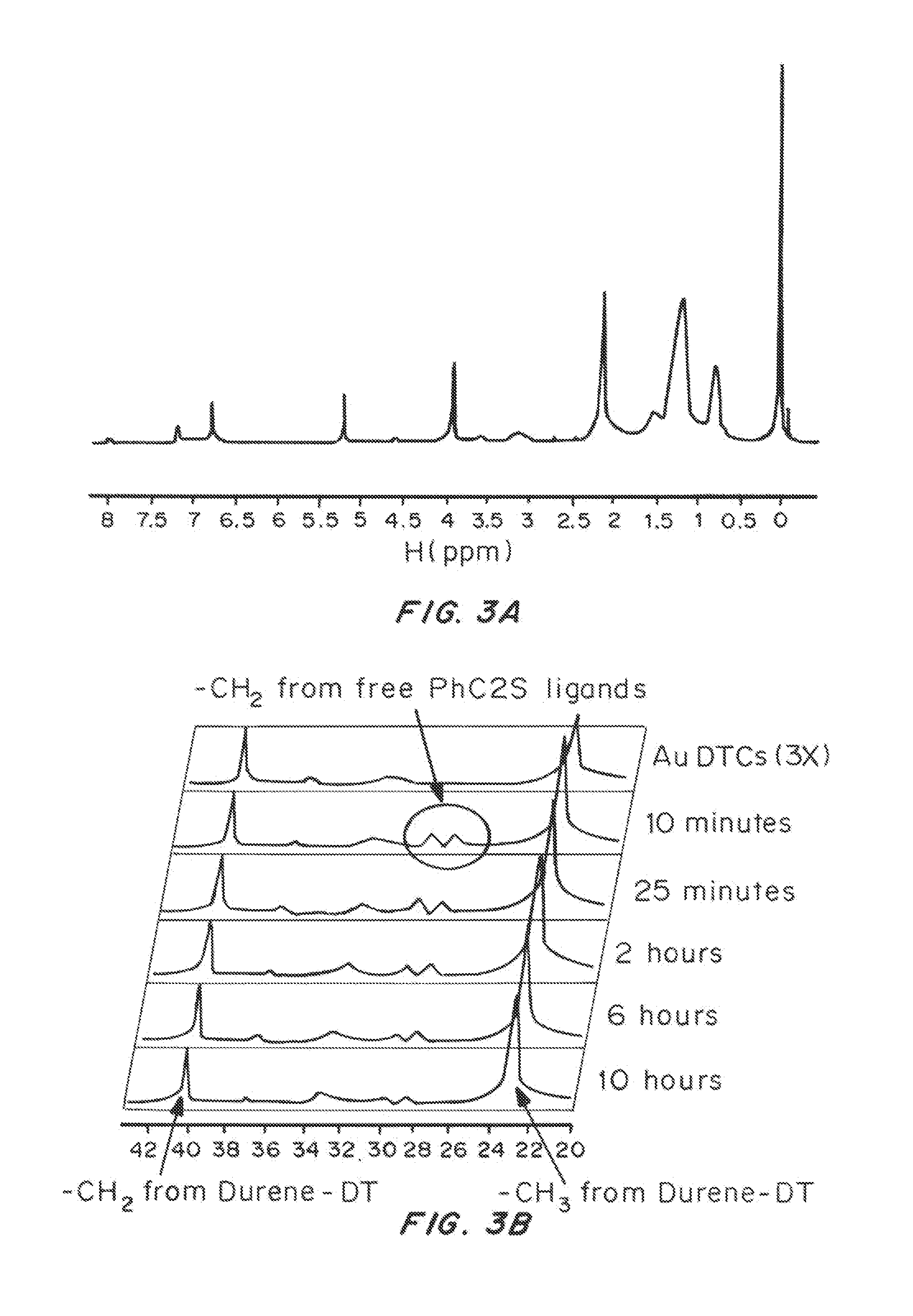Monolayer Protected Nanoclusters and Methods of Making and Using Thereof
a technology of nanoclusters and nanolayers, applied in the field of monolayer protected clusters, can solve the problems of toxicity and technical limitations of materials, and achieve the effects of improving solubility, reducing toxicity, and increasing sensitivity
- Summary
- Abstract
- Description
- Claims
- Application Information
AI Technical Summary
Benefits of technology
Problems solved by technology
Method used
Image
Examples
example 1
Synthesis and Purification of Gold Monolayer Protected Nanoclusters
[0133]Organo-Soluble Nanoclusters
[0134]Durene-α1,α2-dithiol (durene-DT) protected gold nanoclusters (Au DTCs) were synthesized using a one-phase procedure. Briefly, HAuCl4.3H2O (0.1 mmol, 39.4 mg) was dissolved in 10 mL of water. TOABr (0.12 mmol, 66 mg) in 10 mL toluene was used to transfer Au(III) into the organic phase to form TOA-AuCl4. The toluene phase was isolated and cooled over a dry ice / acetone bath. Meanwhile, a solution of durene-DT (0.3 mmol, ˜60 mg) in 10 mL toluene was added to a solution of TBA-BH4 (1 mmol, 258 mg, in 10 mL toluene) at rapid stirring. This solution was also chilled over the dry ice / acetone bath. The two suspensions were mixed together at rapid stirring. Dry ice was gradually removed from acetone bath and the reaction was allowed to proceed for several hours at room temperature. The reaction was stopped after the absorbance transition stabilized. The solution was rinsed with water 3-5 ...
example 2
[0139]The reaction between the amino moieties on the amine-PEG molecules and carboxylate moieties on the nanoclusters was catalyzed by 1-(3-dimethylaminopropyl)-3-ethylcarbodiimide hydrochloride (EDC) as the condensation agent. Briefly, the carboxylate terminated AuNCs (1 mg / mL, ca. (0.5-1)×10−5 M) were codissolved with methoxypolyethylene glycol amine (MW 750, (1-2)×10−5 M) in aqueous solution. An excess amount of EDC (1×10−4 M) was added in the solution at pH=8.5. The reaction solution was stirred for an additional 24 h at room temperature. PEGylated AuNCs in solution were recovered by centrifugation at 10 000 rpm, washed with 10 mM phosphate-buffered saline (PBS) at pH=7.4, and further purified by dialysis (MWCO 8000) against 10 mM PBS buffer solution. Representative products of the coupling reaction were characterized by H NMR and IR.
example 3
Change in Absorbance and Luminescence During Reaction of Au25(SC2H4Ph)18 with Durene-DT as a Function of Time
[0140]In the presence of extra durene-DT molecules, the absorbance and luminescence spectra of Au25(SC2H4Ph)18 MPCs change over time as shown in FIG. 1. The characteristic absorbance bands at ca. 400 nm, 450 nm and 670 nm from Au25(SC2H4Ph)18 nanoclusters (Au25 MPCs) gradually diminish. Meanwhile, the near-IR luminescence increases. The increase in emission intensity or quantum efficiency (QE) is opposite to the trend previously observed, in which the luminescence of Au MPCs is found to decrease upon exchange with a 1,2-dithiol DMPS. This observation suggests a qualitative order of QE of 1,4-dithiolate-Au>monothiolate-Au>1,2-dithiolate-Au assuming that the core size and ligand / core polarity are comparable during the ligand exchange reaction (i.e. within 24 hours).
[0141]The ligand exchange process generally follows second-order reaction kinetics. Importantly, the Au core size ...
PUM
| Property | Measurement | Unit |
|---|---|---|
| quantum efficiency | aaaaa | aaaaa |
| quantum efficiency | aaaaa | aaaaa |
| quantum efficiency | aaaaa | aaaaa |
Abstract
Description
Claims
Application Information
 Login to View More
Login to View More - R&D
- Intellectual Property
- Life Sciences
- Materials
- Tech Scout
- Unparalleled Data Quality
- Higher Quality Content
- 60% Fewer Hallucinations
Browse by: Latest US Patents, China's latest patents, Technical Efficacy Thesaurus, Application Domain, Technology Topic, Popular Technical Reports.
© 2025 PatSnap. All rights reserved.Legal|Privacy policy|Modern Slavery Act Transparency Statement|Sitemap|About US| Contact US: help@patsnap.com



